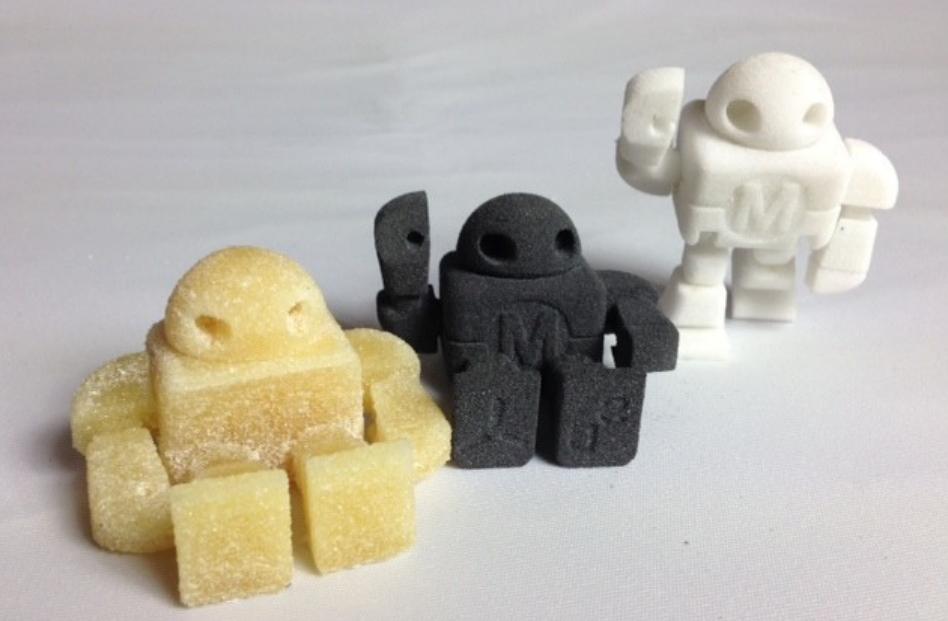Italy’s 3D printer manufacturer Sharebot has been in the news quite a bit lately. Arguably, among their many new projects and announcements, one of the most surprising one was SnowWhite, the first functional, commercialised low-cost laser sintering (LS) 3D printing platform. What is so impressive, to me at least, is that Sharebot made it look so simple to build a LS machine but the fact of the matter is that, if it was so simple, a lot of other companies would have done it already. Although some are working on it, Sharebot seems to have a considerable lead, enough to dedicate themselves to some “R&D R&R”
Indeed, it gave the team the opportunity to experiment with new some materials. The issue here is to be able to calibrate the laser to function with the different melting temperatures of each particular powder. Project SnowWhite generally uses nylon and nylon blends but this time around they tried it on a very different – and sweeter – type of powder: sugar.
When they invented the machine that was to become 3D System’s Chefjet, the SugarLab applied an inkjet printing technology (similar to ZCorp’s) to sugar to create solid sugar structures. Other 3D printing food systems implement adaptations of extrusion technology. So why not try sugar with laser sintering?
Sharebot did and the result is that it worked just fine, creating a perfectly caramelized Maker Faire mascot robot and thus adding sugar to the list of professional materials available for laser sintering.
Some might argue that it is just a matter of electrically calibrating the laser intensity according to the sugar’s melting point, however just to try this at home, first you need to have a functioning LS system to experiment with. And Sharebot R&D has one.
The research and development team, led by Gabriele Carloni and Andrea Redaelli, celebrated the event by creating the most expensive sugar cube ever. That simple sugar base geometry may be unfit for additive manufacturing although if you are curious to know what it tastes like you might get to try at the upcoming Maker Faire Rome.





